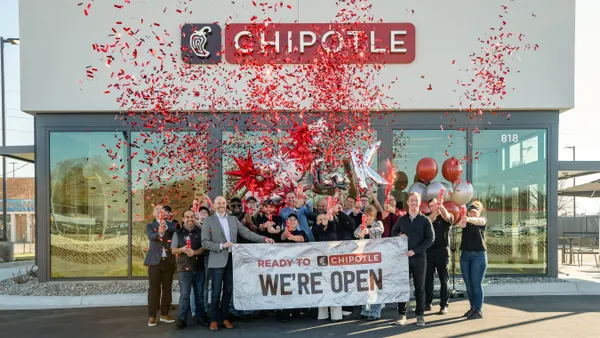Dive Brief:
- Valyant AI has launched its conversational AI platform at Good Times Burger & Frozen Custard in Denver. The customer service platform is taking drive-thru breakfast orders, according to a press release.
- While it is similar to smart devices like Alexa and Google Home in that it responds to customer commands, it has a much smaller vocabulary with keywords needed to take meal orders.
- The system allows businesses to streamline the customer experience, improve employee efficiency and help address the current labor shortage, according to the release.
Dive Insight:
While robots and AI have been cropping up in the restaurant space of late, there has yet to be an industrywide implementation like that seen in the retail segment. Many of the use cases for restaurants so far have been to process data coming from store operations.
Google and Harvard teamed up last year, for example, to use AI to better identify restaurants that could be sources of foodborne illness. Restaurant tech company Presto launched its Presto AI system in January to provide real-time data of restaurant operations, producing actionable recommendations and predictive modeling so operators can make better decisions. SevenRooms partnered with Amazon in October to use Alexa for restaurant-specific skills, such as asking the smart device what guests usually order or to remind staff of guest requests.
But the drive-thru seems especially primed for AI improvements. Because more than 50% of all QSR revenue is driven by drive-thrus, AI can present a good opportunity to reduce bottlenecks and improve speed of service.
As drive-thru demand has increased in recent years, accuracy has improved but average speed of service has climbed from 225 seconds in 2017 to 234 seconds in 2018, according to QSR Magazine.
"Seconds count in the drive-thru, and if customers see a long line, they’ll often keep driving and look for another restaurant," Valyant AI founder and CEO Rob Carpenter said in the press release.
For Good Times, the system allows for employees to focus on the customer at the window and provide faster service, Good Times COO Scott Lefever said in the press release.
The system uses human-in-the-loop, an AI model that uses both human interaction and machine learning to improve — meaning it’s constantly learning during drive-thru interactions. According to the release, the technology can identify problems, accurately take orders and catch opportunities to improve the drive-thru experience.
As more restaurants struggle with retention and labor costs, AI and other technology will soon become even more needed in the fast food world.











